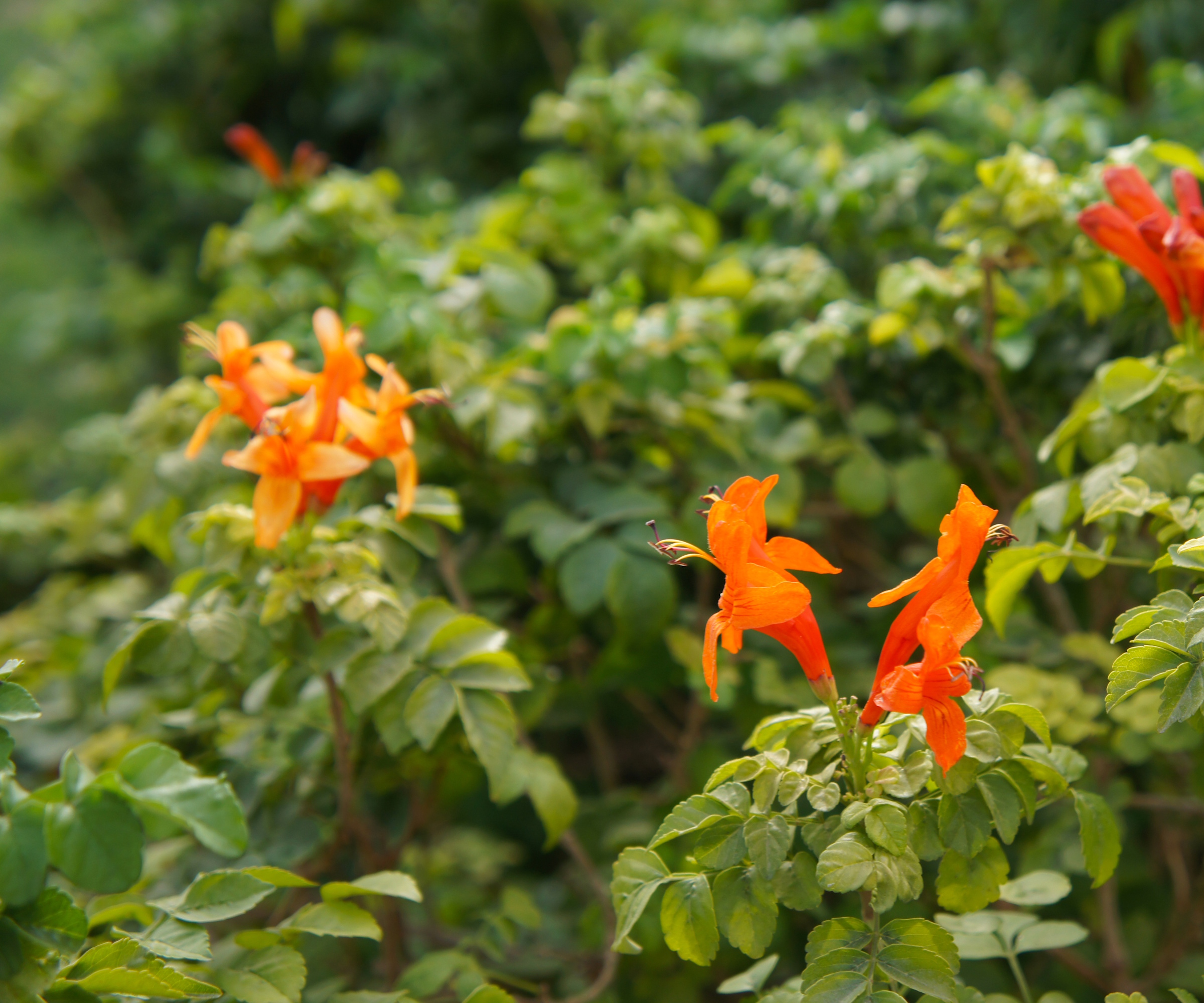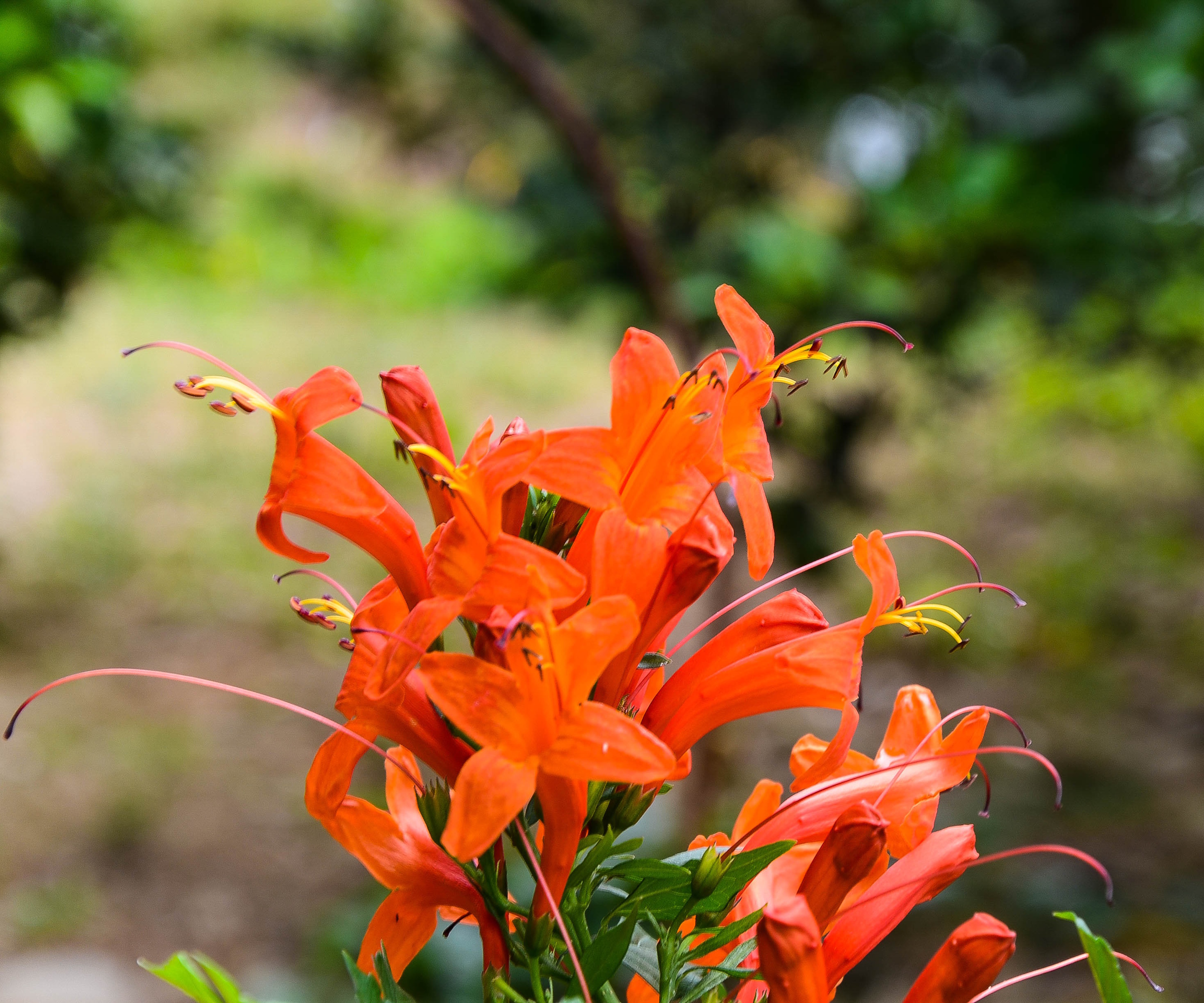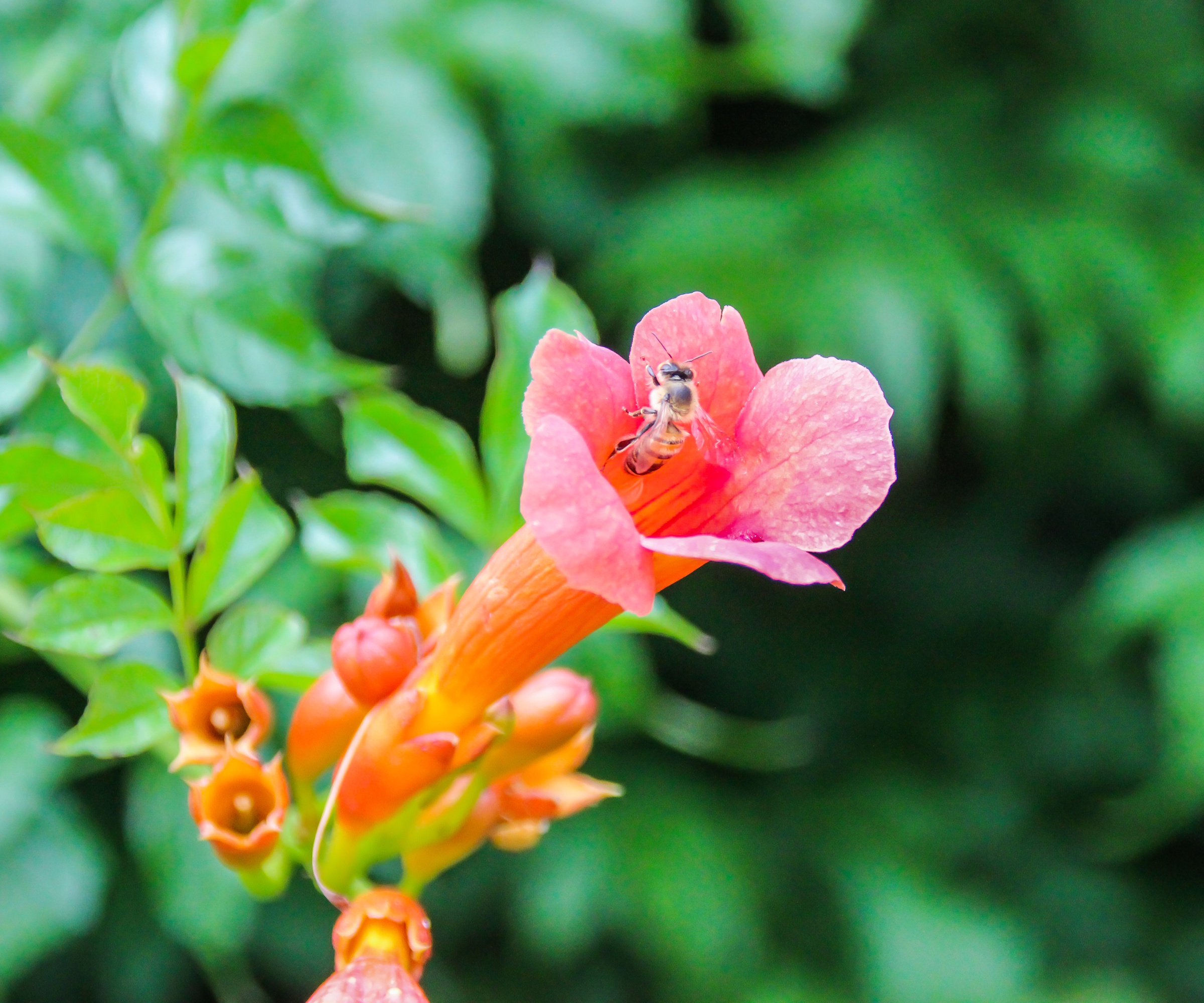
Tecomaria capensis, commonly known as cape honeysuckle, is a fast-growing, evergreen or semi-evergreen shrub native to southern Africa. Brimming with vibrant, trumpet-shaped flowers in hues of orange and yellow, it adds a burst of color to gardens and attracts hummingbirds, butterflies and bees. Cape honeysuckle thrives in the warm sunny climates of USDA zones 9-11, but is no stranger to cooler regions grown as stunning container plant.
It's not all flowery flash though. Cape honeysuckle is common in regions with low rainfall as it tolerates drought once established in the landscape. As such, it’s a popular plant in places where resilience is necessary, such as southern California where it is often used as a hedge or screen and also in wildfire-wise plantings.
Without occasional pruning, T. capensis can have a vigorously sprawling nature and can be used as a cascading groundcover. You can also train it onto a trellis where it becomes one of the best climbing plants in a dry, hot environment. We’ve gathered tips from two experts on how your cape honeysuckle can become the blooming jewel of your home landscape.

How to grow cape honeysuckle
Despite its name, cape honeysuckle is in the Bignoniaceae family and not closely related to a true honeysuckle (Caprifoliaceae). It is often confused for Tecoma stans, a yellow-flowering perennial shrub in the same family native to the Americas, as they both have trumpet-shaped flowers, but with distinctly different habits.
For a cape honeysuckle alternative, find Tecoma stans plants at Fast Growing Trees.
Growing habits of cape honeysuckle

‘It’s more of a shrubby vine,’ says Justin Hancock, a horticulturist for Costa Farms in Miami, Florida. ‘I've tried to think of a good northern equivalent, and blackberry may be the closest. It does a better job of supporting itself than Blackberry; Tecomaria is a little more upright and shrubby, but if you don't prune it, it'll get long and lanky especially in the Deep South.’
‘You'll see them as hedges and screens here in southern California,’ says Tom Foley, Director of Product Development at Everde Growers. ‘Some people shear them up against walls and stuff. You'll see them 2-3 ft. wide and 10-15 ft. tall. They shear really well.’
Get started on your own cape honeysuckle hedge with these live plants available from Walmart.
Both Hancock and Foley note that cape honeysuckle is a pollinator attractor. ‘The hummingbirds love it,’ Foley says. ‘You'll see the hummingbirds just buzzing to get the plants,’. Hancock notes that this has been a great plant for pollinators in South Florida and is a popular choice as a hedge for hummingbird and butterfly gardens.
Care guide for cape honeysuckle

- Soil: ‘Moist and well-drained soil is optimal,’ according to Hancock. ‘But for the world who doesn't live in optimal condition, Tecomaria tolerates dry, gritty soils pretty well.’
- Light: Hancock says full sun is best for Tecomaria. ‘It tolerates part shade, but part shade will reduce bloom count and will probably make it even lankier.’
- Watering: ‘Tecomaria is a very low-water plant,’ says Foley. ‘Of course when you're first planting it, it needs to be watered to help it get established. And once it's established, I've seen them not watered at all.’
- Fertilizing: Despite its resiliency, Foley says it doesn't hurt to fertilize Cape Honeysuckle once a year early in spring. ‘I use a granular 20-20-20 fertilizer on in March and that’s it,’ Foley says. ‘That’s it—it's a pretty easy plant.’ You can find premium granular fertilizer at Amazon.
- Toxicity: Cape Honeysuckle is not toxic to humans, dogs and cats. And as mentioned earlier, hummingbirds flock to it for its nectar, so is safe for our avian friends, too.
- Pests: Hancock has seen aphids on Tecomaria, and imagines that it can be susceptible to scale if that is a pest in the area. ‘I imagine thrips might bother it, but I don’t think there’s anything too exotic that bothers it,’ he says. Although, being in South Florida, he can say that sometimes iguanas will bother it in the landscape.
FAQs
Can you grow cape honeysuckle in containers?
The Cape Town series of cape honeysuckle was developed by breeders to be a more compact version of the often-rambling plant, growing to be just 4-5 ft. tall and 3 ft. wide. Cape Town Yellow, Cape Town Red and Cape Town Orange lend themselves well to container gardening.
If you’re growing cape honeysuckle in a container, Foley suggests fertilizing it with a granular fertilizer. ‘This will help it keep blooming,’ he suggests. And from experience, he says the Cape Town varieties are not only well-suited for containers, but they are also way more floriferous. Hancock says cape honeysuckle has “broken a few hearts” of Northerners when they hear it is hardy to just 40F.
But, he says, ‘if you want to try something new for a hot, sunny space, Tecomaria is a fun one to try because of that heat and dry tolerance and the way that it attracts the pollinators, and it is so wonderfully compatible with plants like Mandevilla that it makes a great entry-level, first-timer plant.’
For more suggestions of plants that will thrive in dry heat, check out of guide to drought-tolerant climbing vines, including the real honeysuckle and some vibrant and tropical-looking favorites.







